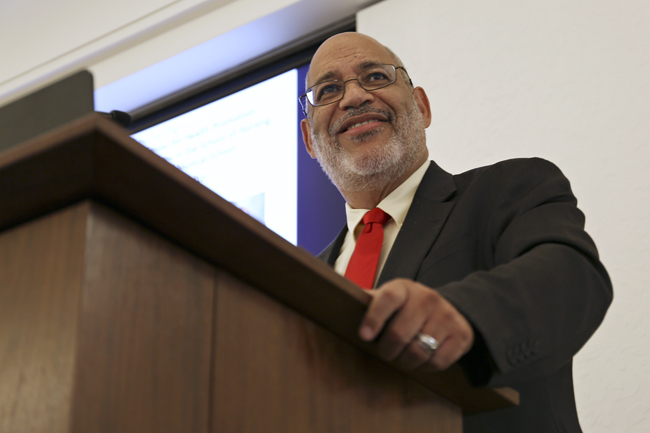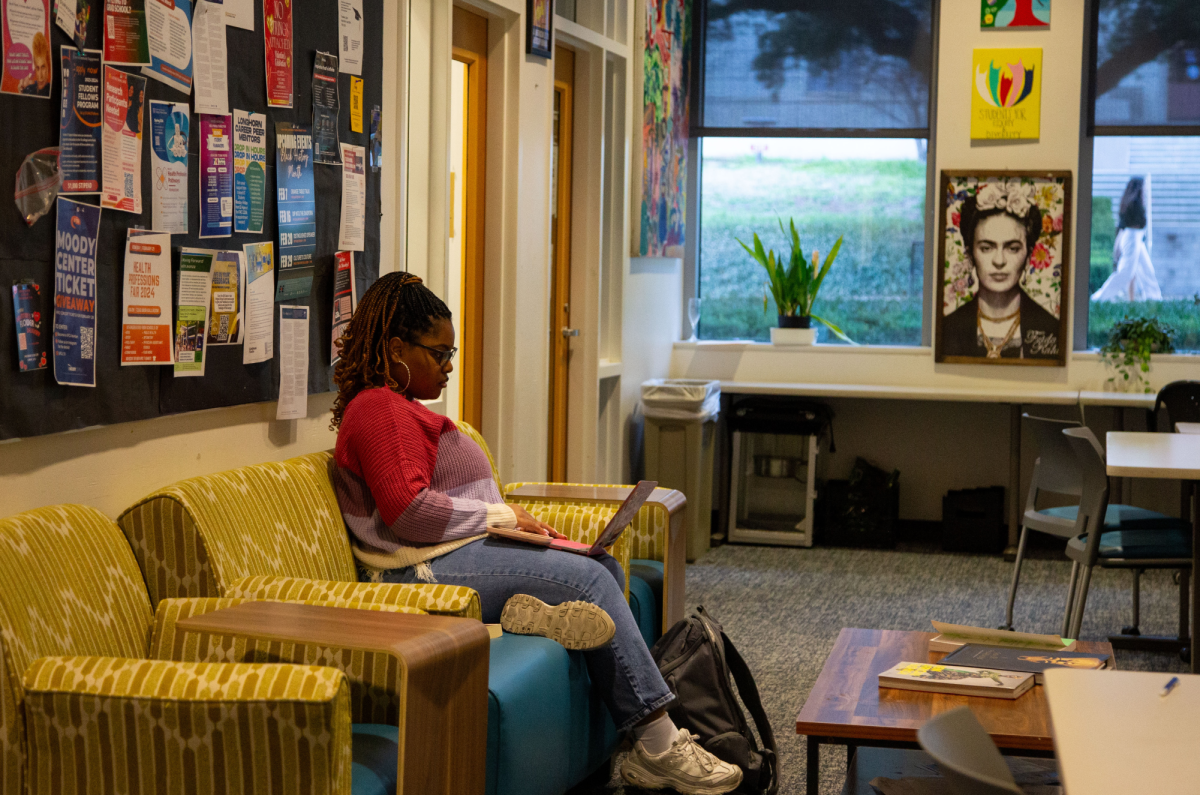Two health advocates discussed the main factors of health disparity at the Rapoport Center’s Fall 2014 Health and Human Rights Colloquium on Monday.
Lovell Jones and Mitchell Katz both spoke in Townes Hall during the free, public event and talked about the importance of improving national health and eliminating disparities in health care provisions.
Jones, professor emeritus at both UT M.D. Anderson Cancer Center and the UT Graduate School of Biomedical Sciences, talked about the lack of discussion in health disparities and the silence of racism in today’s society.
“The real issue stems around the disconnect between discovery and delivery,” Jones said. “Despite all the money that’s been used for health disparities, not much has been done but [it’s] gotten worse.”
Referencing The Journal of the American Medical Association to support his claims, Jones said African-American women are 45 percent more likely to die of breast cancer than white women in Houston, although it is home of the largest medical centers in the world.
“The racial disparity gap in breast cancer mortality rate in Houston is higher than national average … and is worsening,” Jones said. “You would think this article would launch an effort, and I’m still waiting.”
Jones said he does not want to play “the blame game,” but, rather, he wants to have an open dialogue between respected leaders to discuss long term solutions for improving health care distribution.
Katz, director of the Los Angeles County Department of Health Services, discussed political intervention options, including zoning and tax incentives, for addressing chronic health problems.
“The idea is [for government] to make it easy for people to make a positive choice in their life,” Katz said.
According to Katz, to see a real difference in health, the initiatives need to be geared toward the people who need it most. He said those in the lowest income bracket live in areas where it is unsafe or inconvenient to exercise, and zoning policies can make a difference in social structure.
Rhiannon Hamam, a second-year law student, was pleased with the outcome of the seminar and impressed with both speakers.
“The statistics about health disparities were really surprising,” Hamam said. “I realized they existed objectively, but delving into why they exist was really important.”





















